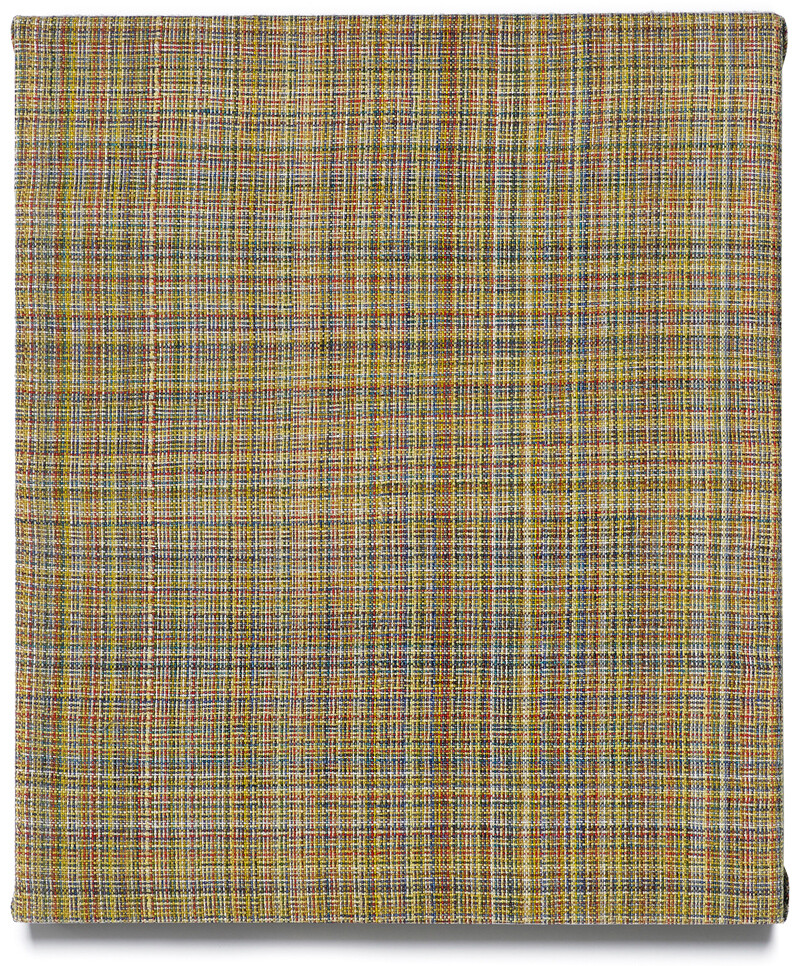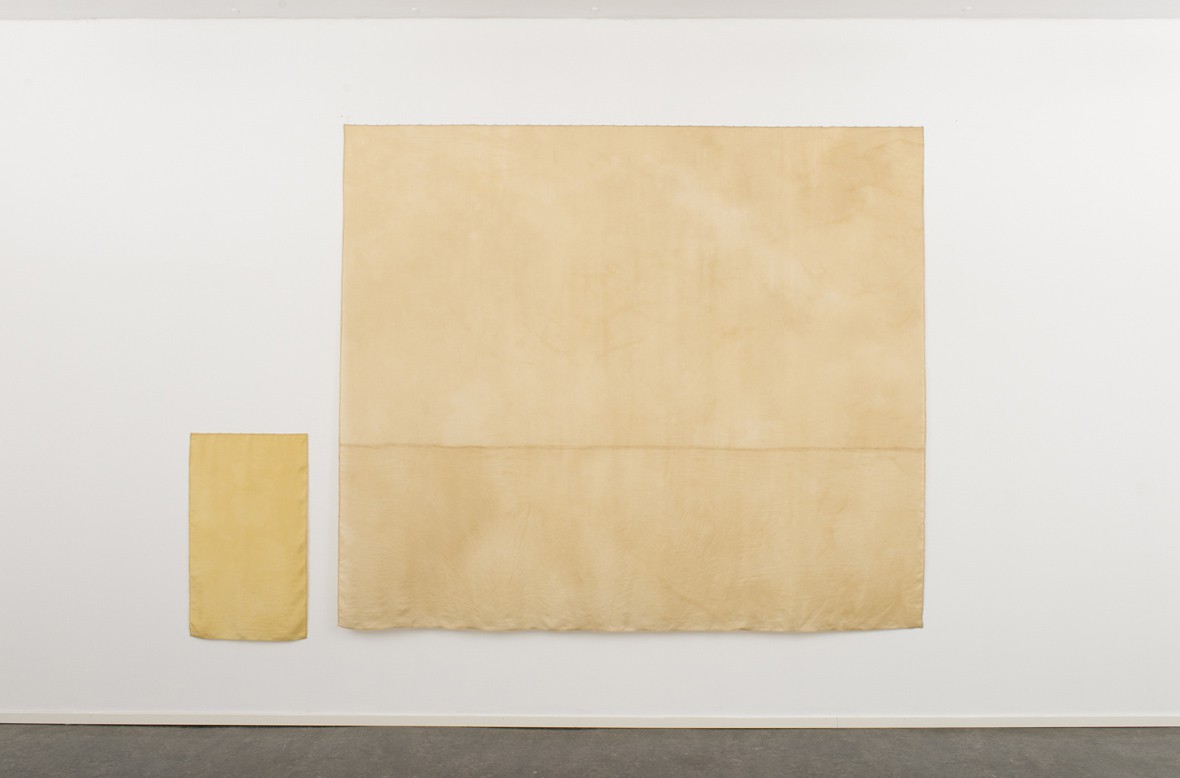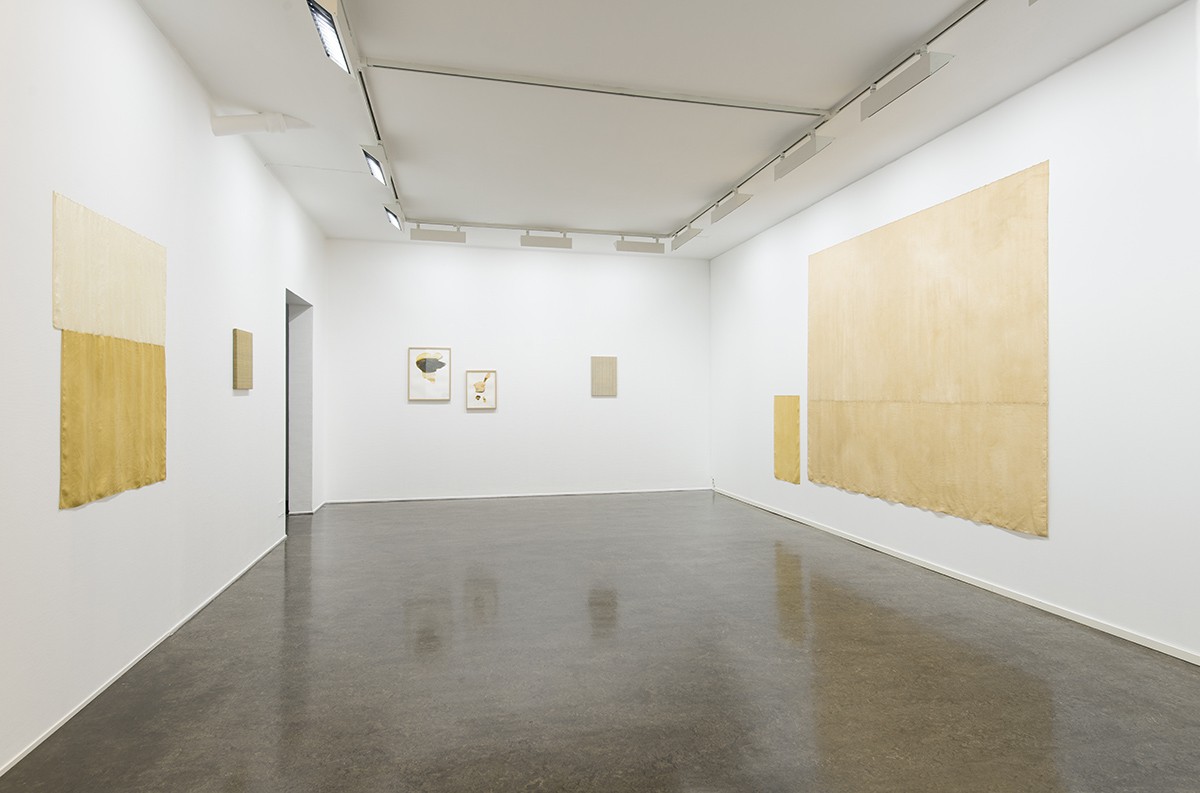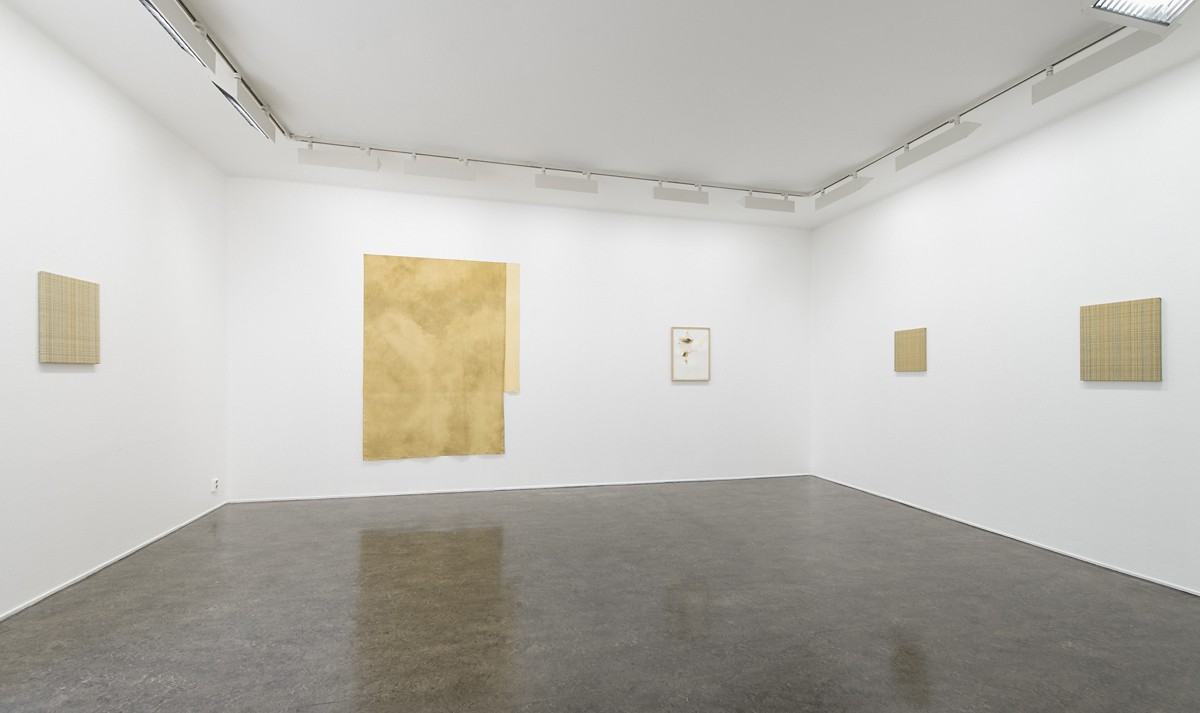Subjective systems
Utstillingen Subjective systems utforsker fargers egenskaper med
utgangspunkt i planter fra Hildurs jord syd på Island og akrylfarger som
er industriellt produsert. De to forskjellig fargesystem har meget ulikt
innhold; den industriellt lagde fargen er kjemisk fremstilt mens
plantefargene bærer i seg omgivelsen de vokser i. Hildur utforsker de
forskjellige kvalitetene og innholdene i disse fargetypene gjennom vev,
maleri og innfarging av tekstiler. Plantene på Hildurs jord er sentral i
denne utstillingen. Å undersøke et stykke land gjennom plantene som
vokser der er både en subjektiv og en systematisk prosess. For Hildur
betyr også jordstykket noe spesielt, et sted som er hennes eget.
Mapping a Piece of Land: Color, Material, and Earth in the Work of Hildur Bjarnadóttir
There is something very familiar and immediate in the work of Hildur
Bjarnadóttir. Varicolored cloths, in solid colors or checked. The
texture and weave all but ask us to touch, to feel how the fabric
handles. Cut in simple shapes and arranged on the wall, the cloths all
come across as paintings. Unassuming canvasses
veiling the great concentration and thought that went into their making.
Hildur Bjarnadóttir creates her works from the ground up in an almost
literal physical sense. Her raw materials are linen and wool yarns and
silk fabric. She weaves the linen and wool and dyes the silk. In one
respect she has gone further than even the most dedicated craftspersons.
For some of her works, which may truly be called investigations given
the research and
experiment involved, she has made her own natural dyes, gathered the
plants, boiled them down, and extracted their juice as the basis of dyes
for use in coloring her yarns. It is scarcely possible to imagine
getting closer to the origin of a painting than to weave the canvas and
color it with one’s own dyes.
Hildur Bjarnadóttir gathers the material for her dyes at Þúfugarðar, her five-acre landholding in the Flói area, east of Selfoss. She has systematically recorded, photographed, and collected the wild plants growing on her plot of land, such as angelica, tea-leaved willow, and meadowsweet, and made from them the dyes used in the works displayed here. The works in silk are dyed in extracts of single plants. The linen and wool cloths are multicolored and woven from yarns colored partly with herbal dyes and partly with acrylic paints. They combine natural dyes, which Bjarnadóttir has handmade on her own land, with ready-made, mass-produced synthetic pigments from the realm of modern technology. From this description one might guess that the encounter of two such different worlds would lead to dissonance and conflict. On the contrary these colors of unlike derivation entwine to create color-tones that easily balance and agree.
Modern art is built on a clear separation between fine arts such as painting and sculpture and applied arts, the so-called craft and design fields, which involve useful activities such as weaving and embroidery. Hildur Bjarnadóttir dissolves this boundary by turning applied-art techniques into methods of painting. These works may be termed woven paintings, as the basic form of each is inseparable from traditional textile methods practiced by people in Iceland and elsewhere for centuries.
Bjarnadóttir does not begin with the empty canvas or cloth as the starting point and ground of a painting. The ground itself has been taken apart and put back together, as a reminder that the free, fine arts rest on the work of those never valued at full worth, the skill and training of craftspersons and industrial workers. Women’s crafts have not been placed high in art´s ranks of honor.
A certain ambiguity resides in the composition of the picture surface.
The monochrome ground gains new meaning through the patterns resulting
from
different methods of weaving and crocheting threads. A multicolored
pattern of vertical and horizontal bands may be seen as either a
colorful table linen or a geometrical-abstract painting. The familiar
checked tablecloth that is sometimes allowed to peep from the
still-lifes of French Cubists or Icelandic abstract painters here takes
center-stage and assumes
independent life. The roles are reversed. We are
invited to view an abstract painting in a checked cloth, not a checked
cloth in an abstract painting.
Hildur Bjarnadóttir’s work is remarkable for the way it evokes the
complex relationship between color, material, and earth. In our modern
world natural colors live in constant close quarters with the synthetic
color-systems that surround us. Natural colors have lost ground to
synthetic colors and the endless
possibilities that technologized color-production offers. The relation
of color to material is particularly striking and strong in these woven
paintings because it has to do with their origin and meaning. These
colors manifest the earth, not the colorless world of technology but the
mortal earth we belong to.
Bjarnadóttir limits herself to organic colors, crushes the essence from
that surface of earthly flora that thrives in sunshine, and indeed her
works reveal a sympathy with the life-supporting earth that
nourishes not only vegetation but man and beast. Here color is something
more than an impression of the countryside; it is a relic of the land in
condensed and dried form.
For artists, pigments are material resources just as plaster, marble,
paper, and pencil are. In Hildur
Bjarnadóttir’s work colors are not merely material resources but
benefits of the land. Dye functions as both a visual and physical
conduit to the land where the plants grow. It maps the land with color.
This is quite removed from the view of color as a technical aspect of
executing an artwork or as a product to be chosen from a catalogue or
palette. Our age is
perhaps jaded by the glut of synthetic colors that have strayed far from
their origins and soils. If so, it rests solely in the hands of artists
to rediscover the source.
Gunnar J. Árnason




